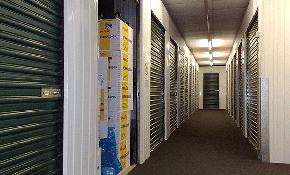ORLANDO-Fourth-quarter investments in commercial real estate product isn’t going to set a record for closed-deal volume but instead may wind up dipping to one of the lowest transaction levels in years across the country, brokers and analysts tell GlobeSt.com.
The reason: Even though per-sf prices are falling in several categories, owners of trophy and steady-producing properties are holding firm on asked prices, waiting and watching to see how the economy turns over the next 90 days.
In Orlando for the first nine months of the year, for example, $77 million worth of deals were done at an average price of $85 per sf compared to $215 million worth of transactions averaging $119 per sf in all of 2000, according to CB Richard Ellis Inc.
In 1999, the last big investment sales year in metro Orlando, sales totaled $427 million with an average asking price of $102 per sf. In 1998, an even higher average per-sf price of $106 was generated on total transactions valued at $360 million.
“The market is saturated with product,” Ronald J. Rogg, head of CBRE’s office and industrial investment properties division, Orlando, tells GlobeSt.com. “Pension funds and advisers are over allocated; REITs are not aggressively buying development or stock buy-backs; and opportunity funds are on the selling side.”
Rogg says only private buyers are left as lenders tighten underwriting guidelines. Among the potential buyers are institutions with IRS Section 1031 requirements; selective institutions searching for core assets; some REITs; and private investors from Germany and the United Kingdom.
Rogg says 75% of the national sales currently being done are in the 24-hour, seven-day cities of New York, San Francisco, Washington, DC, Seattle and Boston. Besides those 24/7 cities, buyers are still looking at product in high-growth and western cities such as Las Vegas, Phoenix, Austin, Los Angeles, Chicago, Houston and Atlanta, the CBRE executive tells GlobeSt.com.
Down the road for this year at least, Rogg sees a continued over-supply of product, flat rental growth, and an emphasis on in-place income and exit strategies by buyers.
“Hospitality, non-credit single-tenant and unanchored retail will be more difficult to finance at any level until consumer confidence is up and positively impacting retail sales on a broad scale,” Steven M. Ekovich, Florida vice president/regional manager, Marcus & Millichap, tells GlobeSt.com.
While investors and lenders will be more cautious, “a broad credit crunch is not anticipated,” Ekovich says. “As Treasuries remain stable, investor spreads will tighten” and “a net reduction in the cost of fixed-rate borrowing is expected.”
The M&M executive says “spreads are moving back, but as yet have not hit pre-attack (Sept. 11) levels.” He says “some hesitancy exists toward lowering spreads in collateralized mortgage-backed securities products.”
Multifamily and mobile home spreads are up 10 basis points; office, industrial and retail up 15 basis points; and hotel spreads are 20 basis points higher.
Apartments in most markets will remain the preferred investment choice due to their favorable risk/return position, Ekovich tells GlobeSt.com
Right behind multifamily are single-tenant net-lease properties with strong credit tenants; grocery/drug-anchored neighborhood and community retail centers; and standard industrial facilities with long-term leases.
“The hospitality sector will experience the most turmoil in the short term in response to reduced business travel, followed by office properties which have been under pressure from dwindling demand for several months,” Ekovich says.
Jeffrey Sweeney, managing director, Grubb & Ellis Co., agrees with the assessments of Rogg and Ekovich. In Central Florida especially, “soft office market conditions and new construction of 1.3 million sf, combined with lower absorption and extensive sublease space (three million sf) have cooled investor confidence,” Sweeney tells GlobeSt.com.
“If the first nine months of 2001 are a blueprint for the year, then office investment in Central Florida will have hit a five-year low,” the Grubb & Ellis executive says.
For instance, office and office service center building sales (20,000 sf and up) have totaled $118 million this year with an average per-sf price of $100. In 2000, sales totaled $218 million, averaging $89 per sf. Those numbers back up figures cited by CBRE’s Rogg.
“One would anticipate the Fed’s lowering of interest rates to be an incentive to buy,” Sweeney says. But “this has not been the case as we have only recorded 14 significant transactions year-to-date.”
He says REITs have been out of the market since 1999 and are “not in an aggressive buying mode.” Pension fund investors “have been slow in their return to the market.”
Sweeney says “this leaves the gate open for private opportunistic buyers, but they, too, are experiencing difficulties acquiring financing as lenders tighten underwriting guidelines.”
Still, Sweeney says, sales will improve. “In the wake of the recent terrorist attacks and the adverse effects they have had on the stock market, not to mention the nation as a whole, real estate investment may rebound (shortly) as investors put their money into solid growth assets and regress from the volatile stock market,” the Grubb & Ellis executive tells GlobeSt.com.
In the Southwest, the Dallas-Ft. Worth real estate investment market remains sluggish while Houston is active.
“Houston remains one of the most attractive markets in the country and prices remain stable,” Darrell Betts, senior vice president, Grubb & Ellis Co., tells GlobeSt.com Southwest Bureau Chief Connie Gore. “We haven’t overbuilt, so we’re not going to see any decline.”
Grubb & Ellis handled $7.2 million worth of transactions in Houston for the first nine months, about equal to last year’s volume.
In contrast, Dallas-Ft. Worth properties “still have a disconnect between the bid and the ask” price, Joseph Hevey, senior director, Holliday Fenoglio Fowler, Dallas, tells Gore. “It’s definitely not a haven for bottom-fishers since low interest rates are sparking refinancing instead of sales.”
Hevey says capital is available to do deals but lenders are exercising extra caution in a Dallas-Ft. Worth market that was hit hard by foreclosures in the 1987 and 1990 economic downturns.





 Copyright © 2024 ALM Global, LLC. All Rights Reserved.
Copyright © 2024 ALM Global, LLC. All Rights Reserved.











